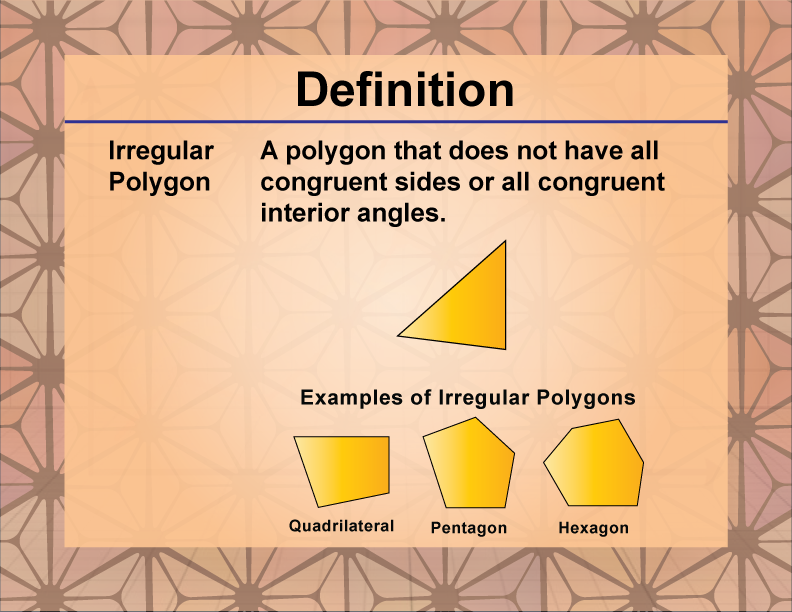
Display Title
Definition--Polygon Concepts--Irregular Polygon
Display Title
Irregular Polygon

Topic
Polygons
Definition
An irregular polygon is a polygon that does not have all sides equal and all angles equal.
Description
In geometry, polygons are fundamental shapes that are defined by having three or more straight sides. While regular polygons have sides and angles that are all equal, irregular polygons do not conform to this uniformity. This means that in an irregular polygon, the lengths of the sides can vary, and the measures of the angles can differ from one another.
Irregular polygons are significant in various fields of study and practical applications. For example, in computer graphics, irregular polygons are often used to model complex shapes and surfaces that cannot be represented by regular polygons. In architecture and engineering, irregular polygons can be seen in the design of unconventional structures and components. Understanding the properties of irregular polygons is crucial for solving problems related to area, perimeter, and tessellation in both theoretical and applied mathematics.
Irregular polygons also play a role in nature and art. Many natural forms, such as leaves and crystals, can be approximated by irregular polygons. Artists and designers often use irregular polygons to create visually interesting and dynamic compositions. The study of these shapes helps in appreciating the diversity and complexity of geometric forms in the world around us.
For a complete collection of terms related to polygons click on this link: Polygons Collection.
| Common Core Standards | CCSS.MATH.CONTENT.5.G.B.3, CCSS.MATH.CONTENT.5.G.B.4, CCSS.MATH.CONTENT.3.G.A.1, CCSS.MATH.CONTENT.3.MD.D.8, CCSS.MATH.CONTENT.6.G.A.1, CCSS.MATH.CONTENT.6.G.A.3, CCSS.MATH.CONTENT.HSG.CO.A.3 |
|---|---|
| Grade Range | 3 - 8 |
| Curriculum Nodes |
Geometry • Polygons • Definition of a Polygon |
| Copyright Year | 2021 |
| Keywords | polygon, definitions, glossary term |